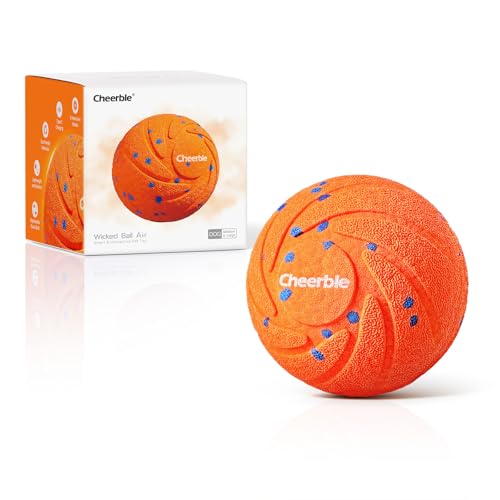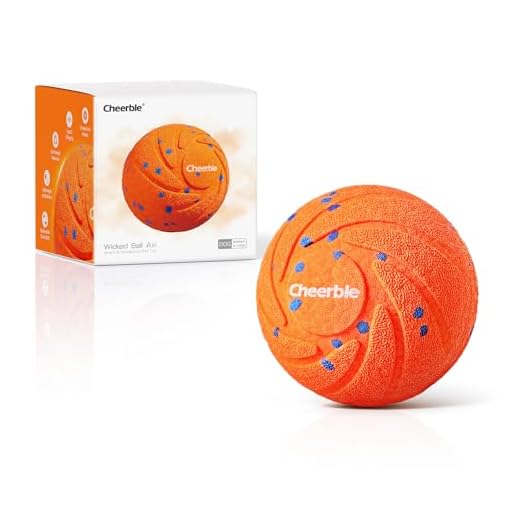




Using praise as a motivator can transform how an animal engages during learning. Every time the furry companion performs the desired action, an enthusiastic voice and affectionate petting can create a positive atmosphere. I recall the first time I tried this approach; my canine pal responded with such excitement that it sparked a genuine connection between us.
Incorporating play into sessions can yield remarkable results. A favourite toy can serve as a reward, turning learning into a fun game. I remember tossing a ball after my pet mastered a new command, and the joy in those moments solidified the lesson far better than any snack could. It’s all about creating a joyful environment where the focus is on bonding rather than merely completing tasks.
Consistency is paramount. Repeating commands and actions in a calm, reassuring manner builds confidence. I often found that practicing short bursts of training led to better retention. A few minutes here and there, combined with lots of love and encouragement, made all the difference. Over time, my companion began to anticipate the next command, eager to engage and learn.
Using body language effectively can also enhance communication. Gestures, such as pointing or clapping, can reinforce verbal cues. I noticed that my friend responded more quickly when I paired my words with a clear hand signal. This visual aid helped bridge the gap between our understanding and made the process more interactive.
Lastly, patience is key. Every animal learns at its own pace. I had moments of frustration, but recognising that each step forward was progress helped maintain a positive mindset. Celebrating those small victories, whether it’s a wagging tail or a happy bark, can turn the entire experience into a joyful journey, strengthening the bond shared.
Understanding Your Canine’s Motivation Beyond Food
Observe closely how excitement radiates from your furry companion during playtime or when it’s time for a walk. This enthusiasm can be harnessed as a powerful motivator. Instead of relying solely on snacks, incorporate these engaging activities as rewards. For instance, after a successful command, toss a favourite toy and watch your pet sprint after it. This not only reinforces behaviour but also strengthens your bond.
Social interaction is another strong incentive. Dogs thrive on companionship and attention. Use praise or a gentle pat as reinforcement. When I first started working with my German Shepherd, I realised that a simple “good boy” or a scratch behind the ears could excite him just as much as a treat. It shifted my approach entirely, making our sessions more enjoyable and effective.
Explore the environment around you. Different surroundings can stimulate your pet’s curiosity and desire to engage. Take training sessions to the park or introduce new challenges like agility equipment. The thrill of exploring new spaces can motivate your furry friend to learn and respond to commands better.
Finally, consider play itself as a reward. A game of fetch or tug-of-war can act as a powerful incentive. After practising a new command, indulge in a few minutes of playtime. This not only reinforces learning but makes the experience fun. If you’re curious about the best way to feed your German Shepherd, check out this best dog food for german shepherd in pakistan for optimal nutrition.
Utilising Praise and Positive Reinforcement Techniques
When working with my canine companion, I’ve found that genuine enthusiasm can work wonders. A simple, heartfelt “Good boy!” or “Well done!” can create a bond that no snack can replace. The key is to ensure that your voice reflects your excitement. A higher pitch or a cheerful tone can make all the difference in capturing their attention and encouraging engagement.
Timing Matters
Delivering praise immediately after a desired behaviour is critical. This helps the pup associate the action with positive feedback. I recall a moment when my furry friend successfully rolled over for the first time. I praised him instantly, and the joy in his eyes was priceless. This instant reinforcement solidified his understanding that rolling over was a fantastic action.
Incorporating Play
Using play as a reward can be incredibly effective. After my pooch mastered a new command, I would grab his favourite toy for a quick game of fetch. The excitement of playtime not only reinforced his learning but also kept our training sessions fun and engaging. It’s all about finding what excites them–whether it’s a squeaky toy, a game of tug, or just some good old-fashioned petting.
Remember, consistency in your approach is vital. Regularly vary your praise, mixing verbal affirmations with physical affection like belly rubs or ear scratches. Your pup will soon learn that good behaviour brings joy, not just from treats but from the love and connection you share. Creating an environment filled with encouragement can transform training into a delightful experience for both of you.
Incorporating Play as a Reward for Learning
Utilising play as a motivational tool can significantly enhance the learning experience. Engaging in fun activities not only keeps the sessions enjoyable but also reinforces positive behaviours. Consider using a favourite ball or tug toy as a reward following a successful command. This creates a clear association between the behaviour and the outcome, making the learning process both effective and enjoyable.
Choosing the Right Type of Play
Not all games are equally motivating. Observe which activities excite and energise the furry companion the most. For some, a game of fetch might be thrilling, while others may prefer tug-of-war. Mixing different types of play can maintain interest and enthusiasm. After a successful command, initiate a brief, high-energy play session to celebrate the achievement.
Creating a Playful Atmosphere
Establishing a fun environment is key. Use a cheerful tone and lively body language to convey excitement during the play. Incorporate short bursts of play into training sessions to maintain focus and enthusiasm. If the furry friend seems distracted or loses interest, a quick game can reignite their motivation and attention. This approach not only makes learning sessions more dynamic but also strengthens the bond between you two.
Establishing a Consistent Training Routine and Environment
Set specific times each day for practice. Dogs thrive on consistency, so aim for short sessions, ideally 5-10 minutes, spread throughout the week. Early mornings or late afternoons work best, as energy levels tend to be higher during these periods.
Create a designated space for learning. Choose an area with minimal distractions, such as a quiet room or a corner of the garden. This helps focus attention and makes sessions more productive.
Incorporate a variety of environments gradually. Once the basics are mastered in a controlled setting, venture into different locations. This builds adaptability and reinforces skills in various contexts.
- Start indoors where it’s calm.
- Progress to your garden or backyard.
- Move to parks or public spaces with gradual exposure to new stimuli.
Consistency extends to the language used during sessions. Stick to the same commands and cues. Using different words or tones can confuse, so maintain uniformity in verbal signals and body language.
Establish a routine that includes a warm-up. Just like humans, a brief warm-up helps prepare for learning. Simple exercises like fetching a ball or a short walk can increase focus and enthusiasm.
Track progress with a journal. Documenting achievements and areas needing improvement helps maintain motivation. Celebrate milestones, no matter how small, to reinforce positivity.
Involve family members in the process. This creates a unified approach and prevents mixed signals. Everyone should use the same commands and rewards, fostering a cohesive learning environment.
Finally, be patient and flexible. Every learner is unique, and some may require more time to grasp new concepts. Adjust your approach based on progress and always keep sessions enjoyable.








